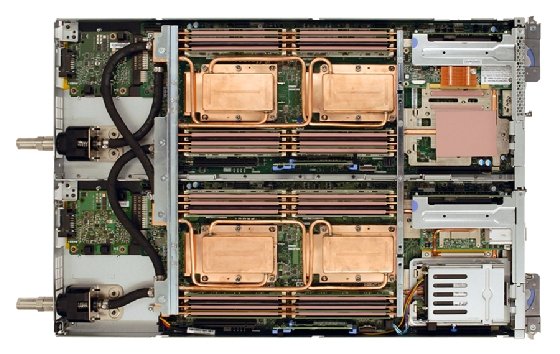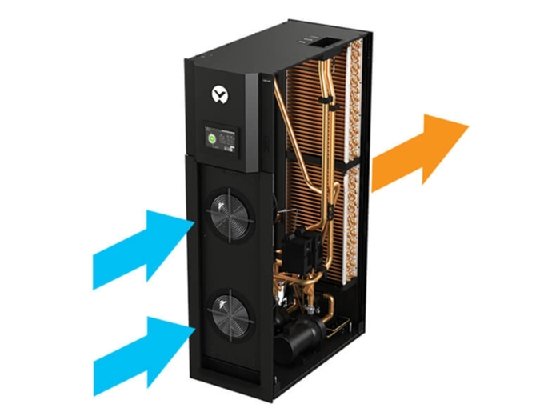water cooling
What is water cooling?
Water cooling, also called liquid cooling, is a method used to lower the temperature of computer processor units (CPUs), and sometimes graphics processor units (GPUs). This process uses water rather than air as the cooling medium because water can conduct heat about 30 times faster than air. Additionally, a water cooling system allows computer components to run at higher speeds while reducing system noise.
All electronics generate heat during operation. As computer components get faster and smaller, the amount of heat generated increases and it is more concentrated in smaller areas. Traditionally, the heat was removed from the components using air cooling, with heat sinks, heat pipes and fans to cool the system. However, some computer systems generate more heat than traditional air cooling can dissipate. This is common in overclocked, multiple GPU or high-density systems. For these high-performance systems, water cooling can remove heat faster and more efficiently allowing these systems to run faster, cooler and quieter.
In water cooled systems a liquid, usually water, is pumped through pipes. The liquid takes the heat from the components and dissipates it in a radiator. It operates on the same principal as the engine cooling system in a car where coolant is pumped through the engine and to the radiator.
Water cooling is most common in personal computers and computers designed for video games because it allows for overclocking the CPU and GPU while keeping the components cool. This can increase the lifespan of the components and it also allows for extremely small systems to be built with high-power components.

Components and types of water-cooled systems
Water cooling systems consist of a water block, pump, radiator, pipes and, optionally, a reservoir. The pump pushes the liquid through the system. The pumped liquid flows through the water block -- which is attached to the CPU or GPU -- where the heat is transferred from the component to the liquid. A single system can have more than one water block.
The heated water goes to the radiator where fans blow cool air over the pipes and cooling fans to remove the heat. A reservoir may hold extra water to provide more thermal mass and water capacity. Flexible or hard pipes or tubing transport the water in the system. Often an anti-fouling solution is added to the water to keep bacteria or algae from growing.
Water cooling systems generally fall into two categories, open loop and closed loop. In open loop systems the user designs the system and builds it from the individual components. In a closed loop, also called all in one (AIO), the cooling system is purchased as a preassembled unit. Open loop systems provide more flexibility and choice for the user. Closed loop systems often cool one component, such as the CPU, but are simple and reliable.

Water cooling in the data center
Historically, water cooling in the data center is rare, but in certain situations it can be advantageous, and it is becoming more common. Traditional server racks in the data center don't use water cooling because consistency and ease of maintenance are prioritized over speed and efficiency.
Server cooling is calculated and components are chosen for longevity. Heat and airflow in servers are designed so air cooling is sufficient in most cases. Also, compared to air cooling, water cooling requires additional maintenance such as to check water levels or replace aging components. And if a water-cooled system fails, water could damage the server and any servers below it in a rack, causing thousands of dollars of damage. Therefore, mechanical refrigeration is used in most data centers.
Some server types may benefit from water cooling. AI, machine learning and high-performance computing clusters may require greater computing power in smaller spaces. Extremely high-density racks may need water cooling to remove the heat they generate or servers with several GPUs may use water cooling for high-density stacking. It is not uncommon for a server room to have a few water-cooled racks. Supercomputer clusters may be designed with water cooling systems.

Water cooling advantages and disadvantages vs. air cooling
Water cooling has its benefits and drawbacks, including:
Advantages
- Greater cooling capacity
- Allows for higher component density
- Quieter
- More power efficiency
Disadvantages
- More maintenance
- Water flow wears out heat blocks faster than heat sinks
- Greater upfront cost
- Leaks can damage the computer

Esoteric liquid cooling
In immersion liquid cooling the entire computer and all its components are submerged in an electrically nonconductive liquid. Oil is the most common liquid for immersion cooling, but some companies are investigating the use of high-performance engineered fluids with low boiling points as potential immersion cooling candidates.
Immersion cooling is used in some cryptocurrency mining operations because it offers extremely high cooling capacity in a small area.
Liquid nitrogen can be used in short-term extreme cooling situations. This is relegated to overclocking competitions where they attempt to make a computer run as fast as possible for a short time.
Evaluate air cooling vs. liquid cooling for your data center and learn about the advancement of data center cooling systems incorporating natural sources. See also liquid immersion cooling relief for ultra-dense data centers and what needs to happen for data center liquid cooling to become commonplace in colocation.








